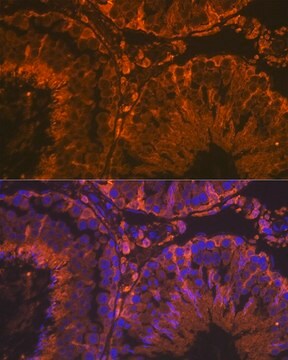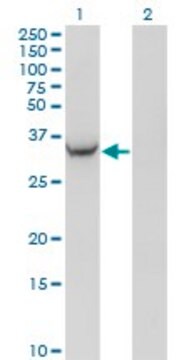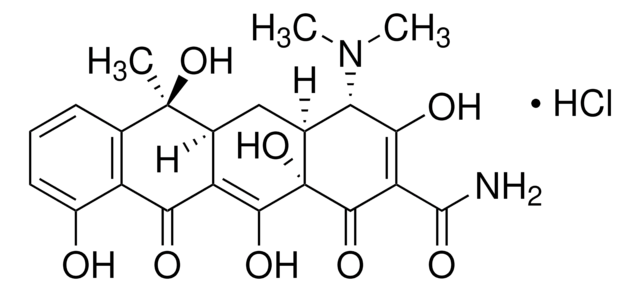Wichtige Dokumente
A6229
Anti-AKR1C3-Antikörper, Maus monoklonal in Maus hergestellte Antikörper
clone NP6.G6.A6, purified from hybridoma cell culture
Synonym(e):
Anti-DD-3, Anti-DD3, Anti-HA1753
About This Item
Empfohlene Produkte
Biologische Quelle
mouse
Qualitätsniveau
Konjugat
unconjugated
Antikörperform
purified immunoglobulin
Antikörper-Produkttyp
primary antibodies
Klon
NP6.G6.A6, monoclonal
Form
buffered aqueous solution
Mol-Gew.
antigen ~38 kDa
Speziesreaktivität
human
Verpackung
antibody small pack of 25 μL
Methode(n)
immunohistochemistry: suitable
indirect ELISA: suitable
microarray: suitable
western blot: 0.25-0.5 μg/mL using cytosolic fraction extract of A549 human lung carcinoma cell
Isotyp
IgG1
UniProt-Hinterlegungsnummer
Versandbedingung
dry ice
Lagertemp.
−20°C
Posttranslationale Modifikation Target
unmodified
Angaben zum Gen
human ... AKR1C3(8644)
Allgemeine Beschreibung
Immunogen
Anwendung
- western blotting
- immunohistochemistry
- enzyme linked immunoassay (ELISA).
Immunohistochemistry (1 paper)
Biochem./physiol. Wirkung
Zielbeschreibung
Physikalische Form
Haftungsausschluss
Sie haben nicht das passende Produkt gefunden?
Probieren Sie unser Produkt-Auswahlhilfe. aus.
Lagerklassenschlüssel
12 - Non Combustible Liquids
WGK
WGK 2
Flammpunkt (°F)
Not applicable
Flammpunkt (°C)
Not applicable
Persönliche Schutzausrüstung
Eyeshields, Gloves, multi-purpose combination respirator cartridge (US)
Hier finden Sie alle aktuellen Versionen:
Besitzen Sie dieses Produkt bereits?
In der Dokumentenbibliothek finden Sie die Dokumentation zu den Produkten, die Sie kürzlich erworben haben.
Unser Team von Wissenschaftlern verfügt über Erfahrung in allen Forschungsbereichen einschließlich Life Science, Materialwissenschaften, chemischer Synthese, Chromatographie, Analytik und vielen mehr..
Setzen Sie sich mit dem technischen Dienst in Verbindung.






